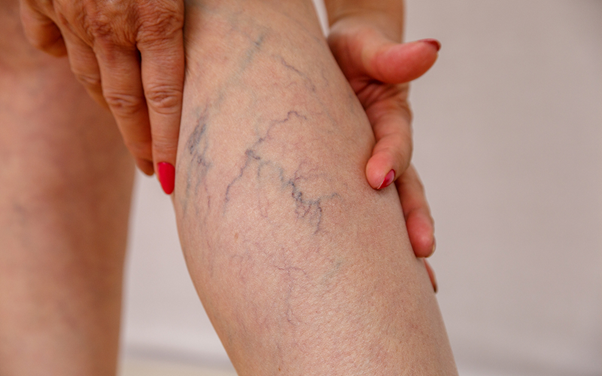Spider veins might sound like something straight from a comic book villain’s backstory, but in reality, they’re a common and very real issue for many people. Those fine, web-like blood vessels that appear close to the skin surface can make you feel self-conscious, but they’re more than a cosmetic concern. Whether you are seeing your first spider vein in Singapore or have had them for years, understanding why they appear and who is more likely to get them can help you take control of your vein health before the “spider” spins its web.
What Exactly Are Spider Veins?
Spider veins are small, dilated blood vessels visible through the skin, often appearing in shades of red, blue, or purple. They commonly show up on the legs, but can also make an unwelcome appearance on the face. While they are generally painless, some people may experience aching, itching, or discomfort in the affected area, especially after standing or sitting for long periods.
When visiting a vascular surgeon in Singapore, many patients learn that spider veins are related to faulty valves in the veins. These valves help direct blood flow toward the heart, but when they weaken, blood can pool, leading to increased pressure and visible veins.
Common Causes of Spider Veins
The exact cause of spider veins is often a mix of factors. Genetics plays a major role. If your parents or grandparents had them, you are more likely to get them too. This hereditary link is one reason they often run in families like a stubborn old recipe no one asked for but everyone gets.
Hormonal changes are another major factor. Shifts during pregnancy, menopause, or from taking hormonal medications can affect blood vessel health and valve strength. Women tend to have a higher chance of developing spider veins than men, in part because hormonal shifts can affect vein strength.
Long hours of standing or sitting can also increase the likelihood of spider veins. Remaining in one position for too long forces the veins to work harder to move blood toward the heart, which can strain the valves and lead to problems. That is why jobs in retail, teaching, or desk work can be silent contributors to the issue.
Sun exposure, especially without protection, can weaken the skin and the small blood vessels underneath, making spider veins more visible. This is particularly true for facial spider veins in lighter skin tones.
Injury to the skin or underlying veins can also cause these tiny vessels to appear, as can certain medical conditions that affect blood flow.
Who Is Most at Risk?
While anyone can develop a spider vein in Singapore, some people face a higher risk. Women, particularly those who have gone through multiple pregnancies, have an increased likelihood due to both hormonal changes and the extra pressure pregnancy puts on the leg veins.
Age is another factor. As we get older, our veins naturally lose some elasticity, and the valves that keep blood moving in the right direction can weaken.
If close relatives have struggled with vein problems, your own chances are higher regardless of how fit or active you are. Inherited traits can affect the strength of your vein walls and valves.
Daily habits also matter. Occupations or routines that keep you on your feet or in a chair for long stretches can strain the veins. Extra body weight adds more pressure, further increasing the likelihood of issues.
What you wear can play a role as well. Clothing that fits tightly at the waist, thighs, or groin can hinder blood flow and set the stage for circulation problems over time.
Can You Prevent Spider Veins?
While you cannot change your genes, you can make choices that help keep your veins in better shape. Regular movement is key. Flexing your calves during breaks, taking short walks, and avoiding sitting or standing for hours without a break can help keep blood flowing.
Compression stockings can offer extra support for your veins, especially if your work involves long periods on your feet. This light, steady pressure helps keep blood moving instead of collecting in the legs.
Wearing sunscreen or shielding your skin from harsh sunlight, especially on the face, can help lower the chances of new visible veins forming.
A balanced diet, maintaining a healthy weight, and staying hydrated can further support your vascular health.
Treatment Options
If spider veins have already made their mark, modern treatments can help. Sclerotherapy is a method where a medicated solution is injected into the affected vein, prompting it to close off and gradually disappear from view. Laser treatments can target and break down small blood vessels without harming surrounding skin.
A consultation with a vascular surgeon in Singapore can help determine the best approach based on your vein health, symptoms, and personal goals. Many clinics offer a combination of treatments for optimal results, along with advice on how to prevent new spider veins from forming.
The Bottom Line on Vein Health
Spider veins are common and often harmless, but they can still affect how you feel about your appearance. Understanding what causes them, recognising your risk factors, and knowing your treatment options can help you stay one step ahead.
If you are noticing more of these tiny “webs” appearing on your legs or face, it is worth getting a professional opinion. Contact Cheng SC Vein and Endovascular to discuss your options for managing and treating spider veins in Singapore.

